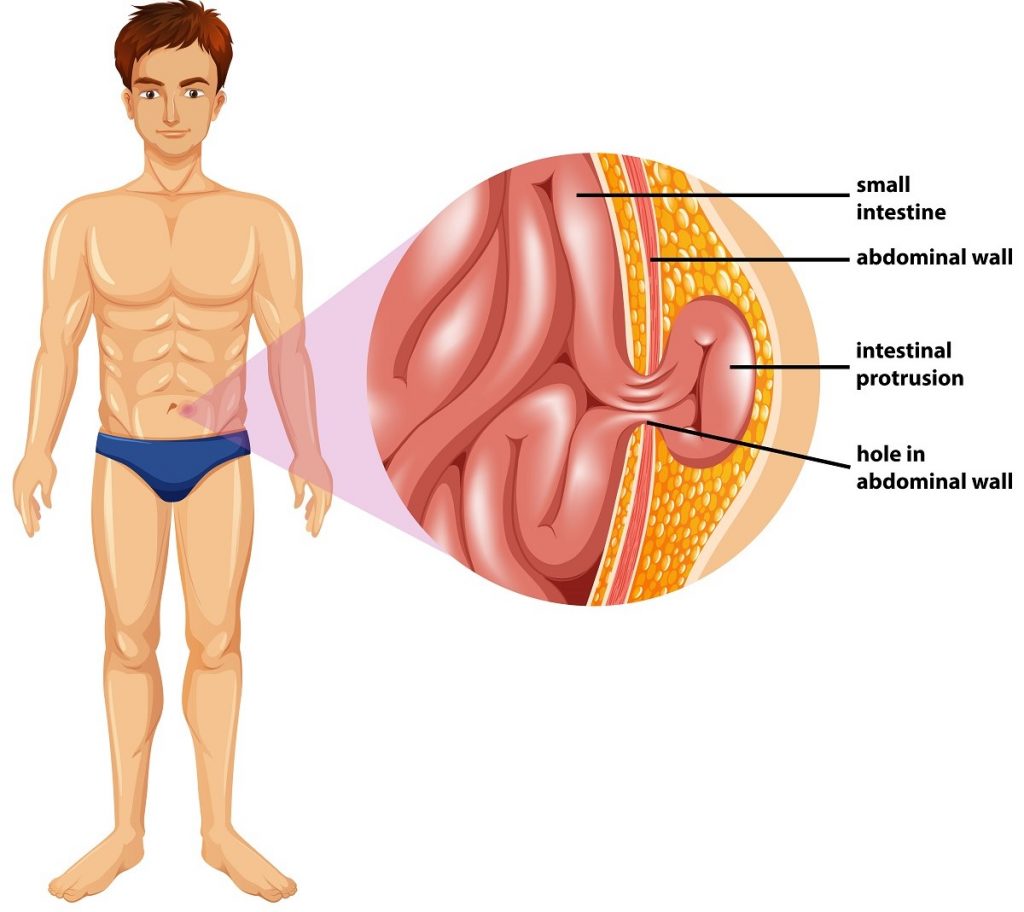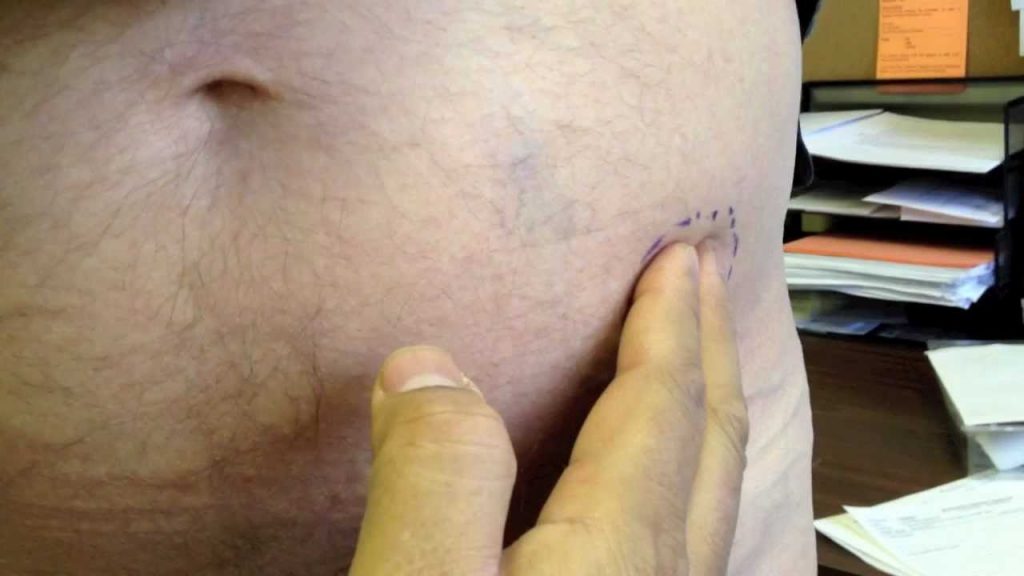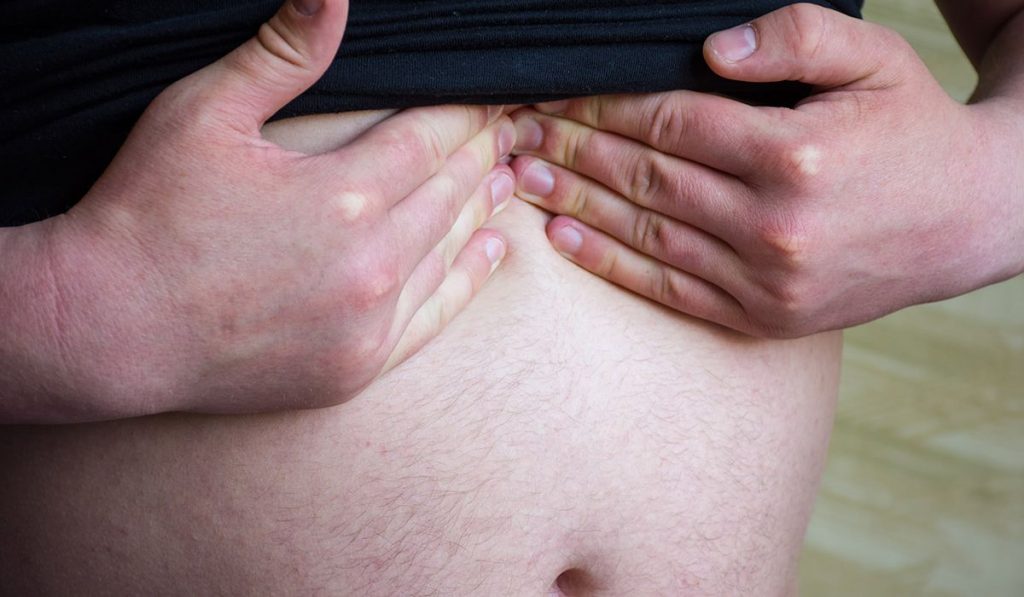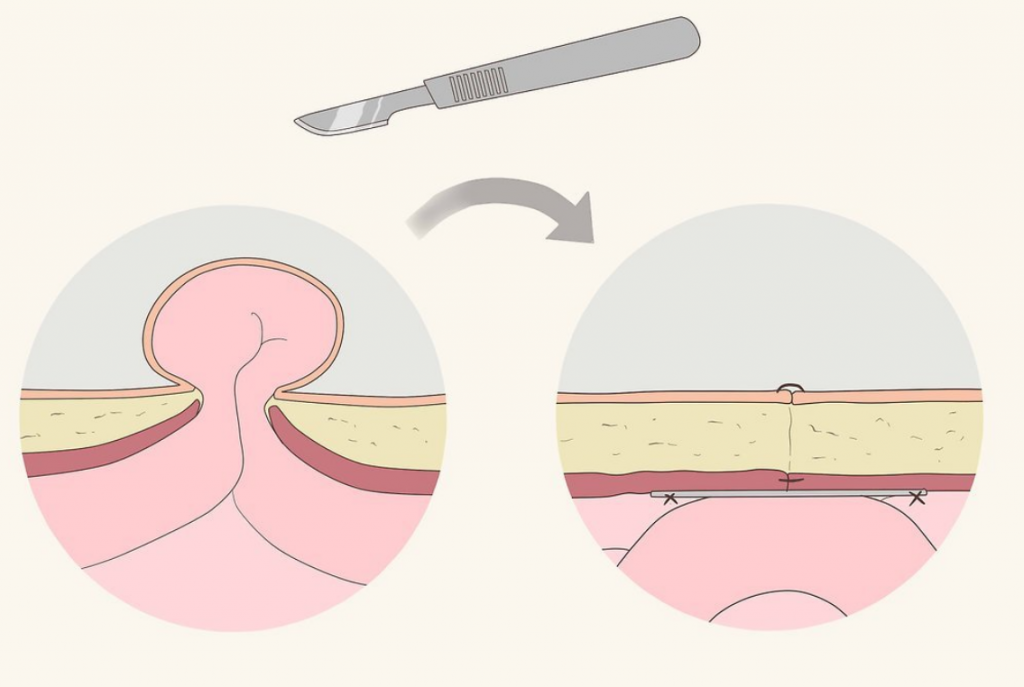
A hernia may be caused by a weakness in the organ’s inner lining that can cause a bulge to occur. It weakens the membrane and causes the contents to protrude. This lump might lead to pain on the site and can even cause an organ to malfunction.
A hernia occurs when the outer layer of the abdomen weakens or rips. This hole caused in the outer region makes the abdomen’s inner lining protrude and form a bulge. This leads the cavity contents to form a sac out of the area where they are naturally present. These contents are mostly fats and lipids that protrude from the thin membrane.
The hernia is a common disease across the Indian populace. It comes in various types. One must be fully aware of it to get treated accordingly. Getting rid of hernia permanently now in Hyderabad is an easy way by Pristyn Care, but more awareness is needed.
Table of Contents
Types of Hernia
Inguinal Hernia:

img source: wikimedia.org
A hernia can occur at any part of the body, but it is mostly associated with the lower abdominal regions, especially the groins. Hernias in the groin area are called Inguinal Hernias. Inguinal refers to the groin. Almost 80% of the cases are related to Inguinal Hernias.
Hernia in underage boys is very common. The abdomen consists of a hole that allows the balls to hang down into the scrotum. Although it is present in girls, it doesn’t let the ovaries to hang out. More likely, this hole closes while the person is still a child. But sometimes, fat might protrude from this opening, leading to a hernia.
Hiatal Hernia:

img source: claritysurgicalny.com
Many of the hernias are sliding hernias and do not have any distinguishing symptoms. These are called Hiatal Hernias. One thing to note is that if the hernia is larger, it is more likely to cause a symptom. When the hernias produce symptoms, they are most likely caused by a gastroesophageal reflux disease (GERD).
Femoral Hernia:

img source: verywellhealth.com
A femoral hernia leads to a bulge below the inguinal area and occurs in the mid-thigh area. This area is home to the femoral canal that contains the femoral artery, vein, and nerve. Although it is a packed space, it could become large enough and allow the abdominal contents into the canal. This type of hernia mostly occurs in women. Femoral Hernias can become irreducible and strangulated.
Umbilical Hernia:

img source: drangelcabanmd.com
Umbilical hernia accounts for between 10 and 30 percent of all hernias. In most cases, the hernia occurs at birth as a protrusion of the belly button. An opening in the abdominal wall causes this kind of hernia. If the opening is small, then it will likely close before the child is two years old. In the case of larger openings, surgery may be necessary to close it.
Generally, this surgery occurs when the child is between two and four years old. Even after the opening closes, the area will be weaker and more susceptible to problems later in life. Hernias occur most often during pregnancy or while giving birth because the area is under stress.
Incisional hernia:

img source: drangelcabanmd.com
This can occur at the site of a scar from previous surgery. The fat or tissue pushes through a weakness created by the surgical scar. It can also occur in months or years after the initial surgery was done. Abdominal surgery can create weak areas in which a hernia can form. Some abdominal surgery patients are more at risk than others, so be sure to consult with the surgeon after your procedure to learn your risk.
Spigelian hernia:

img source: youtube.com
This hernia happens alongside the rectus abdominal muscle and occurs several inches in the side of the middle of the abdomen. This type of hernia occurs only rarely.
Epigastric hernia:

img source: berkshireherniacentre.co
These will occur between the navel and lower part of the rib cage. They are usually made of fatty tissue and rarely contain any intestinal matter. The epigastric hernia is formed in an area of the relative weakness of the abdominal wall and is often painless.
Signs you have a Hernia
A hernia can be distinguished by the presence of any internal or external bulge on your stomach or lower abdomen. It can cause pain or discomfort in your groin, especially while bending over, coughing, or doing tasks. One can feel an added weight on their groin. In men, this pain is mostly caused due to the intestine protruding into the scrotum near the testicles.
It is more likely to be reducible early on. The sac-like protruding can be pushed back into their normal places without much surgery. But if it becomes impossible to return the structures to their normal locations even with light surgery, it is said to be irreducible or incarcerated.
Nearly 1 in 20 children suffer from inguinal hernias. It is visible in newborns and children mostly when the infant is crying, coughing, or straining during a bowel movement. It is more likely to be seen in a grown-up when the child coughs or stands for a long time.
A sliding hernia mostly doesn’t cause any symptoms. The pain and discomfort mostly occur due to the reflux of gastric acid, air, or bile. It happens more easily in the presence of the hernia, though they might not be the only cause for the reflux.
Treating Hernia

img source: wikihow.com
Treatment for Hernia in India is available in all major hospitals. It requires simple treatment, and most of the time, just medications can cure the disease.
It is a problem that can be treated. Incarcerated and strangulated hernias might need surgeries to get rid of them. These are severe and critical medical conditions that have to be corrected in time. That is why most doctors recommend surgical interventions initially, although reducible hernia causes no pain to the patient.
Surgery is performed under local or general anesthesia. Even though it is safe, hernia repair is not suited for all patients.
Many factors may influence the choice of having surgical intervention. These factors include age, health, and type of hernia.
Complications may occur if the patient is a smoker or an alcoholic.
Depending on the factors mentioned earlier, patients may leave the hospital even the second day after the surgery. When complications occur, the patient must be hospitalized for more than three days.







